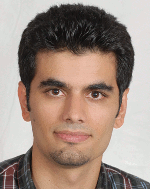 |
|
Biography
Majid Benam was born in Dehdasht, a small city in Iran, in 1988. He studied electrical engineering at Amirkabir University of Technology (AUT). He was then accepted to study his Master’s in Semiconductor Devices at Sharif University of Technology (SUT). After working for several International companies like Agfa HealthCare and Huawei Co., he joined the Institute for Microelectronics at TU Wien as a PhD student in 2017. His research interests include: Quantum Transport, Modeling of Semiconductor Devices, and Interconnects.
A Wigner Potential Decomposition in the Signed-Particle Approach
The signed-particle method is a computationally tractable method used to solve the Wigner transport equation in multiple dimensions. It is based on an alternative interpretation of the Wigner potential as a generator of signed particles, which is very advantageous from a computational point of view. In all other respects, the evolution of the particle is field-less and classical.
The Wigner potential is of central importance in the signed-particle method as it governs the statistics of particle generation. The potential term in the Wigner equation is responsible for particle generation in the signed-particle method. We approximate one part of the potential by a classical force term with a twofold purpose: First, to simplify the numerical complexity involved in the simulation of the Wigner equation, and second, to lay the groundwork for coupling the Wigner and Poisson equations. Following the Kosina-Gehring potential decomposition approach, the physical potential is split into a slowly varying classical component and a rapidly varying quantum component through the definition of an ideal low-pass filter with a cut-off wavenumber. Fig. 1 illustrates the result of potential splitting for the case of six symmetrically distributed dopants in a 2D region of 20 nm x 30 nm. The cut-off wavelength is 10 times the node spacings.
Utilizing this potential splitting, the numerical particles in the signed-particle method experience a classical force through the classical component of the potential, and the discrete momentum of the particles is updated using a Monte Carlo approach, which eliminates the need to increase the number of points in the k-grid. Furthermore, the quantum mechanical component, which vanishes at infinity and has a smooth Fourier transform, is used to efficiently calculate the Wigner potential and the corresponding generation and annihilation processes. The quantum character of the carrier transport is therefore coupled to the classical evolution of particles as shown in Fig. 2, in which the cut-off wavelength is 30 times the node spacings, and thus the quantum component dominates the potential. However, the effect of the classical force is noticeable in the broader path the particles take.
It is important to note that the annihilation process remains valid in the presence of the classical force, as the numerical particles in each cell in the phase space still have the same probabilistic future.

Fig. 1: The potential input and its classical and quantum components for λc = 10Δx.

Fig. 2: The density of particles in two different approaches. Left: Without potential splitting (generation only). Right: With potential splitting (generation + force).



